Once again. Easter Island and New Zealand were so far down below
the Path of the Spider, the tropical belt, that instead of a
Spider the Octopus had been chosen for the creature (creator) aloft.
Similarly, above the tropical belt - far in the north - neither
the Spider nor the Octopus should be the appropriate creature:


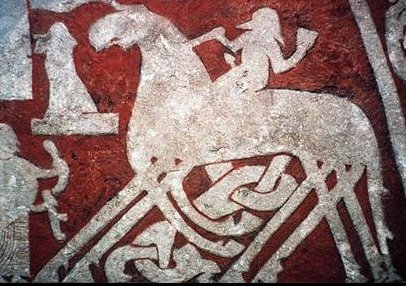
|
Sleipner |
N |
Air |
|
Spider |
Center |
Land |
|
Octopus |
S |
Water |
In the north it was the Horse of the one-eyed Odin (alias Mercury) who had 8 legs.
A horse high up must have wings, and thus we ought to look at
Pegasus.
And indeed there we will find 8 horse-legs, because we should add
those of the red head of the Foal (Equuleus). The rest of
the Foal was
hidden behind Pegasus which gave the illusion of a
single great Flying Horse with
8 legs. The origin of the red head might be found in the
Babylonian Stag:
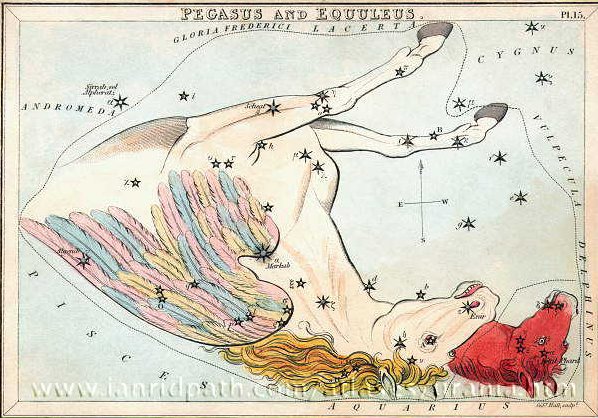
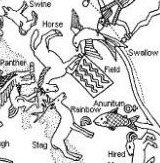
... A sidelight falls upon the notions
connected with the stag by Horapollo's statement concerning the
Egyptian writing of 'A long space of time: A Stag's horns grow
out each year. A picture of them means a long space of time.'
Chairemon (hieroglyph no. 15, quoted by Tzetzes) made it
shorter: 'eniautos: elaphos'. Louis Keimer, stressing the
absence of stags in Egypt, pointed to the Oryx (Capra Nubiana)
as the appropriate 'ersatz', whose head was, indeed, used for
writing the word rnp = year, eventually in 'the Lord of
the Year', a well-known title of Ptah. Rare as this modus of
writing the word seems to have been - the Wörterbuch der
Aegyptischen Sprache (eds. Erman and Grapow), vol. 2, pp.
429-33, does not even mention this variant - it is worth
considering (as in every subject dealt with by Keimer), the more
so as Chairemon continues his list by offering as number 16: 'eniautos:
phoinix', i.e., a different span of time, the much-discussed
'Phoenix-period' (ca. 500 years)
...
According to the time-fram of rongorongo
Dramasa was at the right ascension line for *320 and so was
both γ Equulei and the left hand of
Aquarius:

|
DEC
1 |
2 (336 = 8 * 48) |
 |
 |
|
CLOSE TO
THE SUN: |
|
Gb1-26 |
Gb2-1
(256 = 8 * 32) |
|
21h (319.6)
ARMUS = η Capricorni
(319.0),
DORSUM = θ Capricorni
(319.3),
TSOO = 24 Capricorni
(319.7) |
DRAMASA
=
σ
Oct.,
χ
Capricorni (320.0),
ν Aquarii
(320.3),
γ Equulei
(320.6),
ο
Pavonis (320.8) |
|
Febr 3 |
4 (400) |
|
°Jan
30 (*315) |
31 (396) |
|
'Jan 7
(*292) |
8 (373) |
|
CHRISTMAS EVE (*278) |
"Dec 25 (359) |
|
CLOSE TO
THE FULL MOON: |
|
JUNE 1 (152 = 115 + 37) |
2 |
|
ν Cancri (136.0),
TALITHA AUSTRALIS
= κ Ursae Majoris
(136.1), ω Hydrae (136.8) |
9h (137.0)
σ¹ Ursa Majoris (137.0), κ Cancri (137.3), τ Cancri
(137.4),
ALSUHAIL
(al Wazn, of the Weight) = λ Velorum
(137.5), σ² Ursa Majoris (137.6), τ Ursa Majoris
(137.7), ξ Cancri (137.8)
*96.0 = *137.4 - *41.4 |
|
Aug 4 (216) |
5 |
|
°July 31 (212) |
°Aug 1 |
|
'July 8 |
9 (190) |
|
ST JOHN'S DAY (175 = 350 / 2) |
"June 25 |
 |
 |
|
Ga3-13
(360 / 5) |
Ga3-14
(73) |
|
LUCIA |
DEC
14
(12 * 29 = 348) |
15 |
16 (*270
= 3 * 90) |
17 |
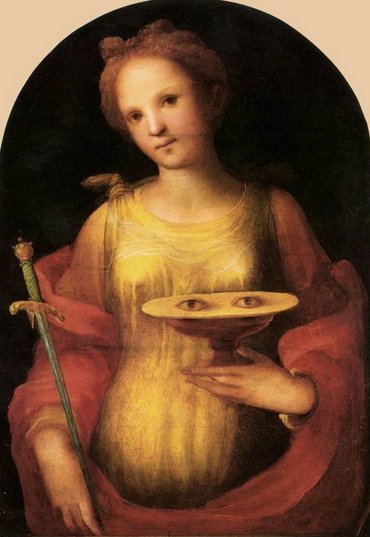 |
 |
 |
 |
 |
 |
|
Gb2-12 |
Gb2-13 |
Gb2-14
(40) |
Gb2-15
(270) |
Gb2-16 |
|
KUH (Weeping)
=
μ
Capricorni
(331.4),
γ
Gruis (331.5)
*290.0 = *331.4 - *41.4 |
no star listed (332) |
η Piscis Austrini
(333.4)
*292.0 = *333.4 - *41.4 |
22h (334.8)
KAE UH
(Roof) = ο Aquarii
(334.0),
AL KURHAH (White Spot) = ξ Cephei
(334.4),
SADALMELIK
(Lucky King)
= α Aquarii,
AL
DHANAB
(The Tail)
= λ Gruis
(334.6), ι Aquarii, ν Pegasi (334.7)
*293.0 = *334.4 - *41.4 |
ι Pegasi (335.0),
ALNAIR (The Bright One) = α Gruis
(335.1), μ Piscis Austrini, υ Piscis Austrini
(335.3),
WOO (Pestle)
= π Pegasi
(335.7),
BAHAM = θ Pegasi,
τ Piscis Austrini (335.8) |
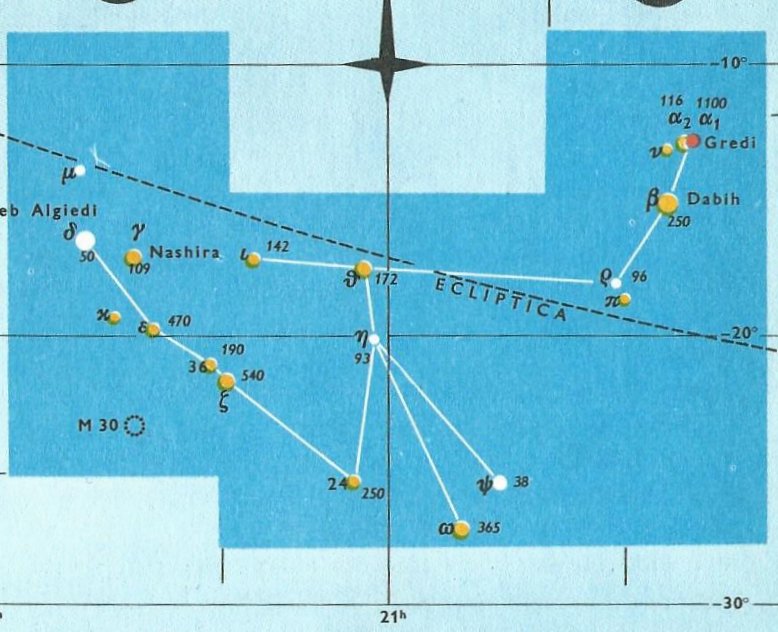 |
|
Febr 15 |
16 |
17 (413 = 14 * 29½) |
18 (364 + 50) |
19 (50) |
|
°Febr 11 |
12 (408) |
13 (364
+ 45 |
2-14 |
15 (46) |
|
'Jan 19
(384) |
20 |
21 (364
+ 32) |
22 |
23
(*308) |
|
"Jan 5
(*290) |
6 |
7 (364 +
8) |
8 |
9 |
|
...
Originally the highly born family
of the Sun, Moon, and stars dwelt in a cave on the
summit of Maunga-nui, Great Mountain, in the
ancient homeland. They were not at all comfortable
in their gloomy home for they could not see
distinctly and their eyes watered constantly ...
... When it was evident that the
years lay ready to burst into life, everyone took
hold of them, so that once more would start forth -
once again - another (period of) fifty-two years.
Then (the two cycles) might proceed to reach one
hundred and four years. It was called 'One Age' when
twice they had made the round, when twice the times
of binding the years had come together. Behold what
was done when the years were bound - when was
reached the time when they were to draw the new
fire, when now its count was accomplished. First
they put out fires everywhere in the country round.
And the statues, hewn in either wood or stone, kept
in each man's home and regarded as gods, were all
cast into the water.
Also (were) these (cast away) - the pestles and the
(three) hearth stones (upon which the cooking pots
rested); and everywhere there was much sweeping -
there was sweeping very clear. Rubbish was thrown
out; none lay in any of the houses ...
... It must be admitted, however, that the task of
raising the sky was not always a long and arduous
one. In the New Hebrides of Melanesia the sky was
formerly so low overhead that a woman who was
pounding roots in a mortar happened to strike the
sky with her pestle. Greatly annoyed at the
interruption she looked up and cried angrily, 'Go on
up higher!' Whereat the sky meekly obeyed her. What
actually happened probably was that the woman struck
the low house roof with her pestle and cried angrily
to her husband, 'If you don't raise that roof
higher, I won't cook you another meal!' thus giving
a strong impuls to the development of the science of
architecture ...
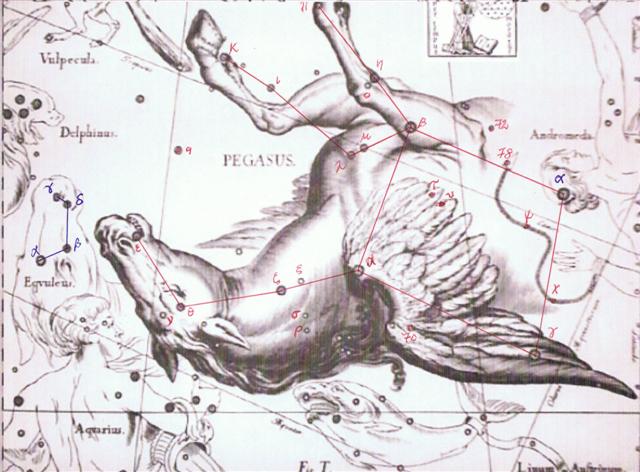 |
|














